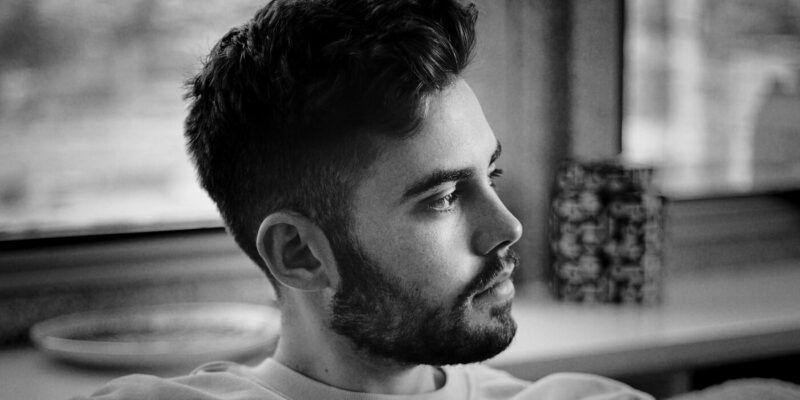Here’s something most people with chronic anxiety don’t realize:
The type of anxiety you have doesn’t matter.
I’ll explain what I mean in a minute. But before I do, let me introduce you to three former clients of mine—all of whom struggled with seemingly very different types of anxiety:
- Jack the entrepreneur had performance anxiety. As the face of his business, Jack frequently had to give talks, make speeches, and present before large or very influential groups of people. And while he was actually very good at it (and almost no one knew he had anxiety) Jack was quietly struggling. He’d get stressed and nervous hours before his talks, he worried constantly that he’d screw up his performances (so much so that he often had to rely on Xanax or beta blockers like propranolol to get him through), and perhaps worst of all, he was turning down more and more speaking opportunities because of his anxiety leading to him feeling ashamed and his business losing opportunities.
- Rachel the project manager had social anxiety. Like Jack, you would never know Rachel was anxious—especially at social events where she was often described as the life of the party. But inside, she dreaded most social functions because of how anxious she got before and how exhausted they made her after. Hours or even days before an event, Rachel’s mind would start spinning with worries, what-ifs, and worst-case-scenarios. And on top of everything else, she was increasingly feeling “inauthentic” because of the mismatch between how she felt and how she was perceived.
- Ben the attorney had sleep anxiety. He didn’t have much trouble falling asleep, but most nights Ben would wake up around 2:00 am with his mind racing through problems and worries. It had gotten so bad that now Ben was spending large chunks of his day worrying about not sleeping at night, which of course made him even more anxious about sleep when he was in bed. He was feeling increasingly burned out, foggy-headed, and irritable.
Interestingly, even though the type of anxiety was dramatically different between them—performance anxiety, social anxiety, and sleep anxiety—the way I helped them was virtually identical. And all of them made major progress on their anxiety and now feel far more confident and calm in situations that used to be nerve-wracking.
The key idea they had to internalize was that they weren’t actually afraid of what they thought they were afraid of.
The Way We Think About Anxiety Is Kind of Primitive
You can tell how comparatively primitive or advanced a field of study is by whether it describes things based on how they appear superficially vs the underlying mechanisms that govern them.
Take astronomy, for example… For a long time, we had a geocentric model of the solar system because, intuitively, it appeared as if the sun revolved around the earth. But of course, as our understanding of astronomy advanced, we shifted to a heliocentric model because we learned that actually the earth revolves around the sun.
Or take medicine… If you have a heart attack, you’ll be diagnosed with a variant of cardiovascular disease (not chest tightness disease) because the mechanism behind the symptoms involves your heart and arteries, not how the muscles in your chest happen to feel—or worse, whether you had a heart attack while giving a speech or lying in bed.
But now, consider anxiety… When you get anxious around spiders, you get diagnosed with arachnophobia—fear of spiders. Or if you get anxious about your physical health, you’ll get a health anxiety label.
This superficial classification system made sense a hundred years ago when we didn’t really understand what causes anxiety. So all we had to go on were the objects of the anxiety.
But we’ve come a long way since then. And these days we have a pretty nuanced idea of what the underlying psychophysiological mechanisms that give rise to anxiety actually are.
And this more nuanced understanding isn’t just academic: If the way you talk about anxiety encourages you to focus on the wrong things, you’re going to have a hard time dealing with it. This is a big part of why so many people like Jack, Rachel, and Ben struggle—and keep struggling—with anxiety:
Because our classification system emphasizes the objects of anxiety, we end up trying to fix the wrong things—the proverbial “treating the symptom, not the cause.”
Jack popping a Xanax before a big speech, or Ben implementing some new 27-point sleep hygiene routine in order to sleep better, is like the person with cardiovascular disease doing lots of chest stretches to prevent another heart attack.
If you want to actually address chronic anxiety, you have to get to the root of the problem.
The Anxiety Mechanism
The underlying mechanisms that give rise to anxiety are pretty straightforward, as I’ll show in a second.
But first, let’s quickly define some key terms:
- Fear and anxiety are both emotions we tend to experience in the face of potential threat or danger. Fear is helpful: feeling afraid when you’re about to step on a rattlesnake, for example. Anxiety is unhelpful: laying in bed at 2:00 am afraid of getting bitten by a rattlesnake on tomorrow’s hike. There are dozens of variants on fear/anxiety, most of which indicate intensity: nervousness, panic, terror, etc.
- Stress is your body’s physiological response to a perceived threat: muscle tension, increased heart rate, sweating, knots in your stomach, etc.
- Worry is the mental act of thinking about dangerous or potentially dangerous things. Imagining yourself being bitten by a rattlesnake, for example. Or what-iffing all sorts of worst-case scenarios about your coworker thinking badly of you.
While all three of these things often show up at the same time—fear/anxiety, stress, and worry—they are distinct phenomena. And a big part of managing your anxiety well comes down to addressing each one appropriately and not confusing them.
Okay, now that we’re on the same page with our terminology, let’s get to the big question:
What actually causes anxiety?
Anxiety is how we feel emotionally when our brain’s fear center mistakenly assumes we’re in danger. This can happen for one of two reasons:
- Our brain perceives something that looks dangerous and activates our fight or flight system. For example: you notice a shadow on the path ahead of you while hiking, your brain interprets it as a snake, and gives you a little shot of adrenaline to help you escape quickly if you need to. And at the same time you feel scared.
- You start worrying about something which also sends the signal to your brain that you’re in danger, leading to the emotion of fear or anxiety as well as a shot of adrenaline.
Here’s the key idea:
Regardless of why you got anxious or whether it’s reasonable or not, what we experience as anxiety is essentially just adrenaline—it’s your body trying to help you stay safe by activating the sympathetic nervous system. And while it’s uncomfortable, it’s not bad or dangerous.
Of course we all experience bits of anxiety from time to time, but this ordinary anxiety tends to only happen sporadically and doesn’t last long. We occasionally worry a little bit or mistakenly perceive something to be dangerous when it’s not, and as a result, we feel some anxiety. This is a universal and completely normal part of the human experience.
But when anxiety grows into a near-constant presence in our life and starts impacting us more significantly, it becomes chronic anxiety. The three people we learned about earlier are good examples:
- Jack the entrepreneur with performance anxiety
- Rachel the project manager with social anxiety
- Ben the attorney with sleep anxiety
But as I alluded to at the beginning, labels like performance anxiety, social anxiety, and sleep anxiety aren’t very accurate or helpful because they distract from the central issue at the heart of every type of chronic anxiety no matter what it looks or feels like, where it happens, or what it’s about.
Emotional Fear Learning and Compound Anxiety
In every single case of chronic anxiety I’ve ever seen, the primary cause was always anxiety about anxiety, or what I call compound anxiety.
But before we dive into compound anxiety, let’s back up and talk briefly about the more general phenomenon called fear learning.
Fear learning refers to our ability to learn to fear different things. On some level, most animals come pre-wired to fear certain obvious dangers. Mice fear hawks, cats fear dogs, and humans fear spiders—all for very understandable survival reasons. But many animals, humans especially, have a pretty advanced fear system that is flexible enough to be afraid of new things that evolution hasn’t had time to bake into our DNA: You can learn to be afraid of careless drivers, for example, so you don’t get hit crossing the street. We take it for granted, but it’s actually pretty remarkable that we’re not only afraid of certain things from our evolutionary past but that we can actively learn to fear new things.
For our purposes, the most interesting thing about fear learning is that it can include learning to fear our own emotions—including fear and anxiety. When our brains learn to be anxious about being anxious, that’s compound anxiety. And it’s this compound anxiety that distinguishes run-of-the-mill ordinary anxiety from chronic anxiety.
For example:
- Jack the entrepreneur wasn’t so much afraid of public speaking or crowds as he was afraid of getting anxious while he was speaking in public or crowds. When we really looked carefully at the content of his thoughts before big performances, he didn’t actually think people were going to hate his talk or that he’d spontaneously do something stupid. What he worried about was that he would get anxious while speaking and that because he was anxious he would make a mistake, people would think there was something wrong with him, etc.
- Rachel the project manager wasn’t really afraid of people thinking she was dumb—she knew she was smart and good in social situations. When we really looked carefully, the real fear was that she would get anxious in front of other people and, just like Jack, do something foolish or be perceived negatively because she was anxious.
- Ben the attorney wasn’t literally afraid of sleep or his bed—he loved both those things! What he was really afraid of was that he would get anxious in bed, and because of his anxiety, wouldn’t be able to sleep, would feel crappy the next day, etc.
In all three cases, anxiety wasn’t the problem. It was anxiety about anxiety that was giving them trouble.
Of course, the fact that we get anxious about feeling anxious isn’t surprising since anxiety—especially if it’s intense or public—is pretty uncomfortable. And our natural instinct when we feel something uncomfortable is to avoid it—either by trying to eliminate it or get away from it. But here’s the really sneaky part: When your brain sees you running away from or trying to get rid of your anxiety, it learns to see anxiety as a threat. Which means the next time you get close to a situation where anxiety might arise, you’re going to feel doubly anxious, which means you’re going to want to avoid your anxiety even more.
I think you can see how this turns into a pretty vicious cycle…
The more you avoid your anxiety the worse it gets. And the worse your anxiety gets the more you want to avoid it!
This mechanism—anxiety avoidance—is the root cause of every type of chronic anxiety regardless of what it looks like superficially. Hence the title of this essay: All anxiety is anxiety about anxiety, by which I mean that all chronic anxiety is maintained by anxiety about anxiety and the habit of avoiding or trying to get rid of anxiety which, counterintuitively, makes the anxiety both more frequent and more intense.
Fortunately, just like you can train your brain to be anxious about anxiety, you can also train it to be relaxed about anxiety. This is called safety learning and it forms the basis of every single effective approach to chronic anxiety there is regardless of what “type” it is.
How to Reprogram Your Anxiety
Everybody gets afraid and anxious sometimes. This is unavoidable.
But you don’t have to get anxious about being anxious. That part is very avoidable—although, ironically, avoidance itself is the thing you need to avoid.
Remember: when you avoid anxiety, your long-term anxiety goes up because you’re teaching your brain to fear anxiety itself. To reverse the process, you have to do the opposite of avoidance:
You have to welcome anxiety and be 100% willing to have it.
Because if your brain sees you approaching, rather than avoiding, your anxiety, it will learn that anxiety is safe. And even though it’s uncomfortable in the short-term, being willing to have anxiety is anxiety-relieving in the long-term because it reduces compound anxiety by teaching your brain that anxiety is safe, not dangerous. That’s safety learning and it’s how you reprogram your brain to stop being anxious about being anxious.
So, what does all this look like in practice?
Like my clients, you might assume it means exposing yourself to the situation you’re afraid of: doing tons of speeches if you have performance anxiety or going to lots of parties if you have social anxiety.
Not exactly. You can do as much exposure as you want, but if you keep trying to avoid or get rid of your anxiety, you’re going to continue to be anxious—and more than likely, get more anxious over time: Jack gave talks all the time and kept getting more anxious; Rachel attended social events all the time and kept getting more anxious; Ben got in bed every night but kept getting more anxious.
Instead, there are two basic steps you need to take:
- Stop avoiding anxiety. Anxiety avoidance can take all sorts of subtle forms. For example, taking fast-acting medication to alleviate anxiety could very well be maintaining your anxiety long-term if the motivation is to feel less anxious. Or if you immediately start doing coping skills like deep breathing exercises, mindfulness meditations, or repeating positive mantras, it will similarly backfire and make your anxiety worse long-term if the intent is to feel less anxious. Remember: the harder you try to feel less anxious, the more anxious you will feel. With Jack the entrepreneur, for example, we worked on progressively limiting the types of situations where he would carry his Xanax with him. Eventually, he was able to go on stage or do a podcast interview not only without taking his Xanax but without even having it available.
- Start welcoming anxiety. You could probably eliminate chronic anxiety if you were simply very rigorous about stopping all of your anxiety avoidance habits. But you can supercharge the process and make it much faster if you combine that with deliberate seeking out anxiety and being willing to have it. For example, with my client Ben, we worked on a series of mindset shifts around anxiety in bed: when he noticed himself feeling anxious, rather than immediately implementing some relaxation technique, he would use the AVA Method to briefly acknowledge and validate his anxiety, then refocus on an enjoyable activity hew could do in bed while being willing to be anxious anyway. In short, he was practicing being tolerant of his anxiety rather than trying to regulate it away. Very quickly he went from having major anxiety anytime he woke up, to just minor spurts of worry and anxiety. And over the course of a couple months, he was increasingly sleeping through the night rather than waking up in the middle of the night. And the reason is that—because he was willing to welcome anxiety, his brain stopped being afraid of it, which allowed his bed to become associated with relaxation rather than stress.
Chronic anxiety is a frustrating problem because everything is backward or contrary to our intuitions: what you think will help with anxiety—immediate relief, coping, distraction—all make it much worse in the long-run; and what you think will make your anxiety worse—deliberately inviting it in and then doing nothing—is the only way to make it better.
The key is to always ask yourself:
What will this behavior teach my brain?
Anything that’s motivated by a desire to eliminate or avoid anxiety, will make the anxiety more intense long-term because, from your brain’s perspective, you’re fighting/fleeing, which teaches it that anxiety is a threat.
Anything that’s motivated by a willingness to have anxiety will make the anxiety less intense long-term because, from your brain’s perspective, you’re welcoming anxiety, which teaches it that anxiety is safe.
To be free from chronic anxiety, you must be willing to have it.
Next Steps
If you struggle with chronic anxiety, a very simple way to start breaking the cycle of anxiety about anxiety is to begin a scheduled worry practice.
Schedule Worry is a simple daily exercise that teaches your brain that worry and anxiety are safe, not dangerous. And in the long-run, this desensitizes you to anxiety itself, leading to a calmer and more confident mindset.
Learn More
Here are a few more essays from me about anxiety and how to manage it well:
- 7 Signs You’re an Anxious High-Achiever
- The 5 Types of Overthinking
- 3 Reasons You’re Stuck in a Low Agency Mindset
Work with Me
If you’re interested in working with me directly, I have a small mindset coaching practice where I work with anxious high-achievers who want to do their best work with less stress and anxiety.




